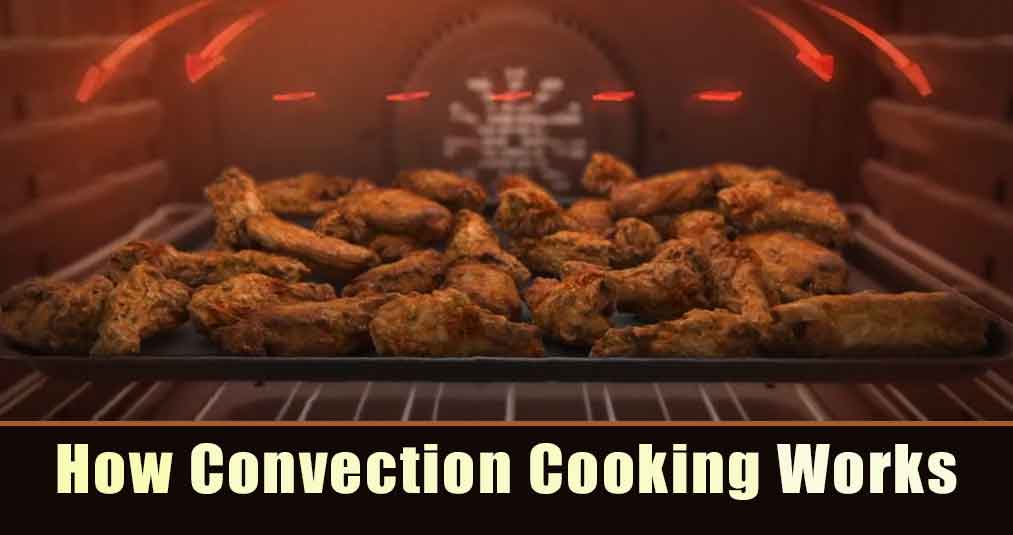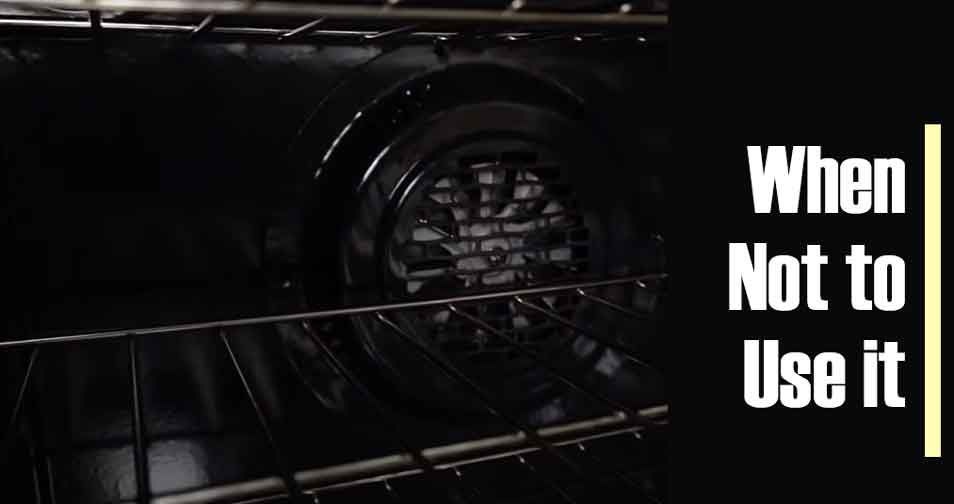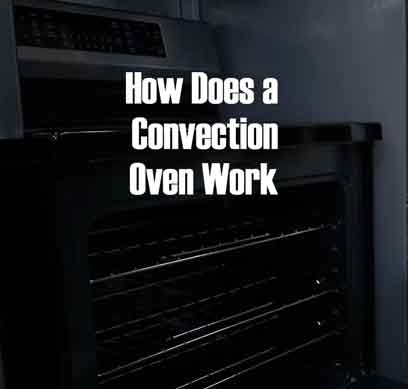Convection oven takes the cooking game to the next level. It cooks food faster than other ovens; you don’t need an air fryer to make food crispy. The cooking features of browning and crisping are so perfect that the food turn flavorful and mouthwatering.
However, convection is a little complex to understand. The features and heating process are different, so you must know some basic things before cooking.
What is Convection Cooking?
Convection cooking is a method that uses hot air to cook food quickly. The oven has a fan and exhaust system that circulates the heated air and transfers the heat to the food. Convection means the process of heat transfer using air movement or fluid.
How Convection Oven Works
A convection oven has a built-in fan that circulates hot air under and around the food to cook faster and crispier. You don’t have to use high heat for cooking food like another standard oven as convection oven heat faster.
The convection oven cooks the chicken, vegetables, meat, and other food evenly simultaneously with its three heating elements, top, rear, and bottom. It pulls the outside air and heat to cook food crispier outside and keep the moisture remaining inside.
The heat is generated from the bottom of the top then the fan circulates the heat around the food. The fan draws the heat from the oven cavity and distributes the heat evenly. This way, the cooking time reduces, and the heat reaches the food efficiently.
When you turn on the oven and set the temperature, the fan starts to heat the air by breaking down the insulating layer of cool air inside the oven. The heat rises more quickly than in any conventional oven.
Convection cooking has other benefits, such as distributing the heat evenly so there is no hot or cold spot in the food. So the texture and browning are more consistent. Also, convection cooking retains moisture and natural juices, making the food flavorful.
When You Should Not Use a Convection Oven
Convection ovens are more potent than conventional ones, so cooking liquid dishes such as baked goods and cakes won’t rise or collapse. Convectional ovens are good for baking goods and cakes. Also, recipes that require covered cooking do not work well in a convection oven because of the hot air circulation.

Dishes like stews, braising meat, etc., have to shimmer and cook evenly with a lid which the circulating air cannot do well.
Dishes with loose toppings or coatings are not suitable for cooking in forced air movement in a convection oven. Also, the dishes will cook unevenly. Convectional ovens are the only option for a consistent result.
The constant airflow is unsuitable for dehydrating or drying foods as it causes the surface of the food to dry out too quickly. Aluminum or thin glasses are unacceptable in a convection oven, as the consistent airflow can warp or shatter these utensils.
Benefits of Convection Cooking
Convection cooking has several benefits that make this appliance versatile. Some of the main advantages are,
- The main benefit of convection cooking is that it reduces cooking times compared to other standard ovens. So, you can cook significant cuts of meat or bake goods that require precise timing.
- The oven circulates hot air to promote coking evenly and make the food brown with a rich texture. So the food will not overcook or undercook.
- Convection cooking improves the food quality by retaining the natural moisture and flavor so the food will be juicier and more flavorful. It also helps achieve crispy crusts on baked foods.
- Convection ovens are versatile and can be used for various cooking methods, such as baking, roasting, broiling, etc.
The convection oven is great for energy efficiency as it cooks food faster and saves more energy than other standard ovens.
Convection Oven Disadvantages
Convection oven has some disadvantages that you should know before purchasing this one.
- The convection oven is not ideal for baking bread, cakes, and pastries as the cake won’t rise or fluffy in circulated air.
- You cannot use a convection oven for cooking too many dishes simultaneously. Overcrowded food blocks the circulated air, so it will take longer time to cook food. Also, the food won’t be crispier enough, so keep at least a tow inches distance between each food.
- Convection oven prices are higher than conventional ovens due to their additional features.
- It would be best if you learned about the cooking time temperature difference from using a convection oven.

- Convection ovens create noise because of the fan that circulates hot air. It may be problematic for you if you are sensitive to noise.
- Convection ovens are more significant than traditional ones, requiring additional space for fans and ventilation. This might not be your best choice if you have limited kitchen space.
How Does a Convection Oven Work in a Microwave
Almost every convection oven model has a microwave system. The microwave has standard mode and convection mode. The normal mode uses the microwave option to warm or cook food. The convection mode transforms the microwave into convection. So convection microwaves are different from traditional microwaves.
